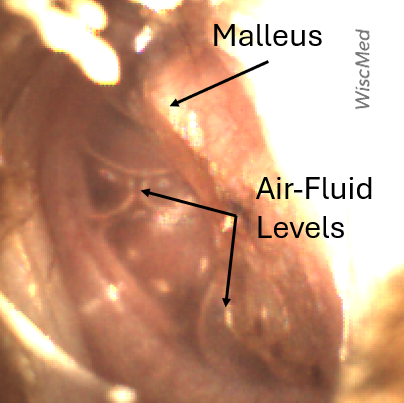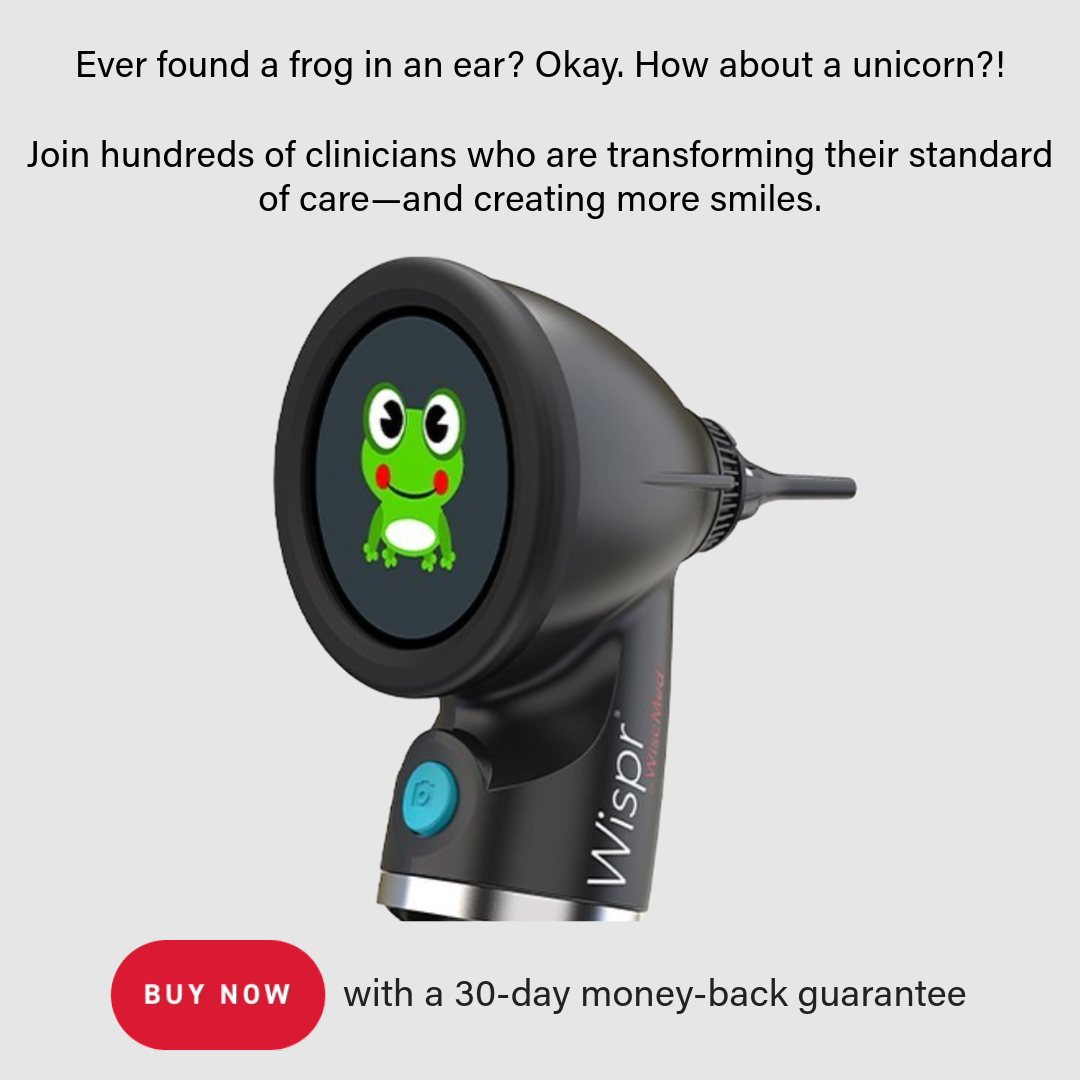
Otitis Media with Effusion – February 15, 2024
An 11-month-old infant presents to the emergency department (ED) with concern for congestion and cough. His parents state the child has been pulling on his left ear, although they note that this is common for him. He has not been crying, fussy, or acting like he is in pain. The family was leaving for a trip in the morning and wanted to be sure, “he was ok” before they got on the airplane. The child had one prior episode of acute otitis media (AOM) three months ago for which he was treated with antibiotics. On exam, there is rhinorrhea with clear lungs and no increased work of breathing. His Wispr digital otoscope exam is shown.
Which of the following is true regarding the child’s condition?
- Treatment with antibiotics is indicated.
- Treatment with decongestants should be considered.
- Treatment with nasal corticosteroids has been demonstrated to be effective.
- None of the above.
Answer: D. None of the above.

The child’s Wispr exam demonstrates a middle ear effusion (MEE) as evidenced by multiple air-fluid levels. The presence of air-fluid levels without tympanic membrane (eardrum) bulging suggests that the Eustachian tube is properly ventilating the middle ear space. His malleus bone is discernible. His tympanic membrane (TM) does not have moderate or severe bulging nor intense erythema and he does not appear to be uncomfortable. Therefore, the most likely diagnosis is otitis media with effusion (OME). Antihistamines, decongestants, and nasal or systemic steroids are not recommended for treating OME. Since OME can be observed following resolution of AOM or as a precursor to an evolving acute otitis media (AOM), it is important to provide anticipatory guidance for the family. When indicated, this may include just-in-case prescription as well as follow-up to ensure resolution of the OME. This follow-up is particularly important given that persistent MEE may contribute to speech, language, or learning difficulties, and is typically recommended at three months following diagnosis.
WiscMed has created a handy visual diagnosis of ear conditions that may be found here.
Here is the complete video exam. Note how quickly the WiscMed Wispr assists with obtaining a diagnostic view in this 11 month-old.
Reference
Rosenfeld RM et al. Clinical Practice Guideline: Otitis Media with Effusion (Update). Otolaryngol Head Neck Surg. 2016 Feb;154(1 Suppl):S1-S41..








































































































































































































